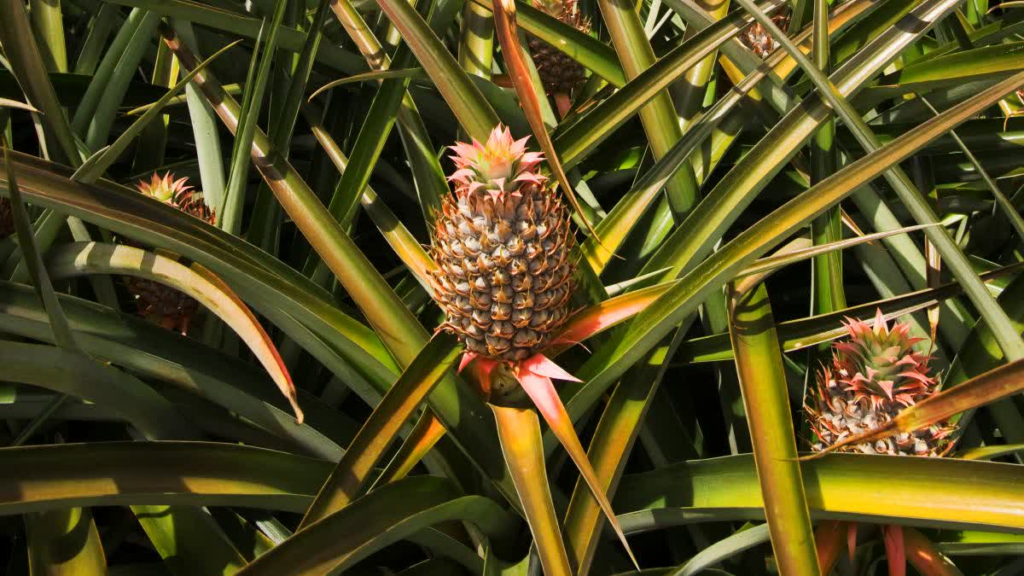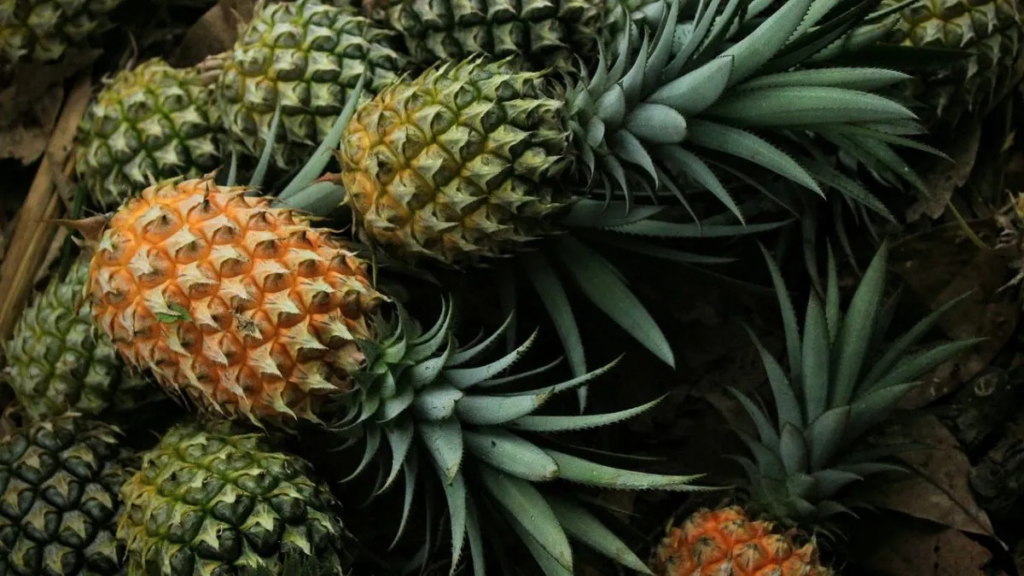Pineapples, with their sweet and tangy flavor, are one of the most beloved tropical fruits in the world. Their unique appearance, crowned with spiky leaves and encased in a tough, textured skin, makes them instantly recognizable. But where do pineapples come from, and how did they become a global symbol of hospitality and luxury? This article explores the origins, cultivation, and cultural significance of pineapples, tracing their journey from the tropical regions of South America to tables around the world.
Origins of Pineapples
The pineapple (scientific name Ananas comosus) is native to South America, specifically the region between southern Brazil and Paraguay. Indigenous peoples of these areas were the first to cultivate and enjoy pineapples, recognizing their nutritional value and refreshing taste. The fruit played an important role in the diets and cultures of these communities, often used in rituals and as a symbol of abundance.
The name “pineapple” was given by European explorers who thought the fruit resembled a pine cone. However, its original name, “ananas,” comes from the Tupi-Guarani language spoken by indigenous peoples in Brazil, meaning “excellent fruit.”
Introduction to the World

Pineapples were first introduced to the rest of the world by Christopher Columbus, who encountered the fruit during his second voyage to the Americas in 1493. Impressed by its flavor, Columbus brought pineapples back to Europe, where they quickly became a symbol of wealth and exoticism. European royalty and aristocracy prized the fruit for its rarity and unique taste, often displaying it as a centerpiece at banquets.
The Portuguese and Spanish explorers played a significant role in spreading pineapples to other parts of the world. They introduced the fruit to Africa, Asia, and the Pacific Islands, where it thrived in tropical climates. By the 16th century, pineapples were being cultivated in regions as far-flung as the Philippines, India, and Hawaii.
Cultivation and Growth
Pineapples are a tropical plant that thrives in warm, humid climates. They are a member of the Bromeliaceae family and grow as a herbaceous perennial. The plant has a short, stocky stem surrounded by long, spiky leaves. Pineapples are unique in that they are a “multiple fruit,” meaning they are formed from the fusion of individual flowers on a single stalk.
The cultivation process begins with planting the crown of a pineapple, which is the leafy top of the fruit. This crown takes root and grows into a new plant, producing fruit within 18 to 24 months. Pineapples require well-drained soil, plenty of sunlight, and consistent watering to thrive. Once the fruit is harvested, the plant can produce additional fruit through side shoots, known as “suckers.”
Top Pineapple-Producing Countries

Today, pineapples are grown in tropical and subtropical regions around the world. The top pineapple-producing countries include:
- Costa Rica: Costa Rica is the world’s largest producer of pineapples, accounting for a significant portion of global exports. The country’s tropical climate and fertile soil make it an ideal location for pineapple cultivation.
- Brazil: As the birthplace of pineapples, Brazil remains a major producer. The fruit is grown throughout the country, with northern regions producing particularly sweet varieties.
- Philippines: Pineapples are one of the most important crops in the Philippines, where they are grown for both domestic consumption and export. The country is known for its high-quality pineapples, which are popular in international markets.
- Thailand: Thailand is a leading producer of canned pineapples and pineapple juice, with vast plantations dedicated to the fruit.
Cultural Significance
Pineapples have held cultural significance in various societies throughout history. In Europe, they became a symbol of luxury and hospitality during the 17th and 18th centuries. Wealthy families would display pineapples at social gatherings to impress their guests, and the fruit was often used as a decorative motif in architecture and art.
In the Americas, pineapples are associated with warmth and welcome. The fruit’s image is commonly used in home decor, such as door knockers and tableware, to convey a sense of hospitality. In Hawaii, pineapples are deeply intertwined with the state’s identity and history, thanks to the influence of the pineapple industry.
Economic and Environmental Impact

The global pineapple industry is a significant contributor to the economies of producing countries. Pineapples are exported fresh, canned, or processed into juice, providing income for farmers and workers in tropical regions. However, the industry also faces challenges, including environmental concerns and labor issues.
Large-scale pineapple plantations can lead to deforestation, soil degradation, and water pollution. Additionally, workers on these plantations often face low wages and poor working conditions. Efforts are being made to address these issues through sustainable farming practices and fair trade initiatives.
Health Benefits of Pineapples
Pineapples are not only delicious but also packed with nutrients. They are an excellent source of vitamin C, manganese, and dietary fiber. The fruit contains bromelain, an enzyme that aids digestion and has anti-inflammatory properties. Regular consumption of pineapples can support immune function, promote healthy skin, and improve digestion.
Culinary Uses
Pineapples are incredibly versatile and can be enjoyed in a variety of ways. They are often eaten fresh, added to fruit salads, or blended into smoothies. Pineapples are also used in savory dishes, such as Hawaiian pizza, sweet and sour chicken, and grilled pineapple skewers. In many cultures, pineapple juice is a popular beverage, and the fruit is used to make jams, jellies, and desserts.
Conclusion
Pineapples have come a long way from their origins in South America to become a global favorite. Their journey reflects the interconnectedness of cultures and the enduring appeal of this tropical fruit. Whether enjoyed fresh, canned, or juiced, pineapples continue to delight people around the world with their sweet and tangy flavor.
As we savor this “excellent fruit,” it is worth remembering its rich history and the efforts of those who cultivate it. By supporting sustainable and ethical practices, we can ensure that pineapples remain a symbol of hospitality and abundance for generations to come.
Also Read: Are Buffalo Nickels Worth Anything? A Comprehensive Guide





